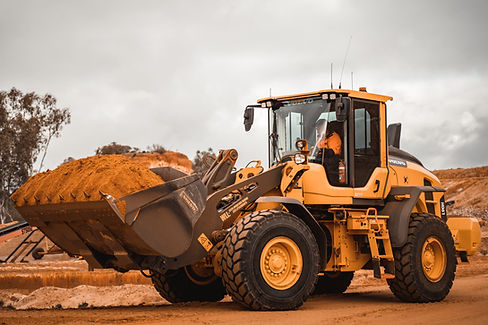Finspection Insights
Why Independent Asset Inspections Still Matter in a Digital Age
As the finance industry leans more heavily on automation, digital declarations, and AI-driven checks, it's tempting to see human inspections as outdated. But independence has never mattered more. Automated systems can only verify what they’re told. They can't walk around a site, spot a switched chassis plate, or sense when something feels "off." We've seen cases where fraud was only uncovered because an experienced inspector noticed inconsistencies a machine would miss. Independent inspections create accountability. They ensure the asset exists, is in the right location, is in acceptable condition, and matches the paperwork. No tick-box can replicate that. For lenders, it's not just about collecting a file — it's about confidence in the underlying security. That’s where independent inspections still shine.


Sub-Hire Audits:
The Overlooked Risk in Equipment Finance
In the equipment hire space, assets often get sub-hired to third parties — sometimes without the lender’s knowledge. This creates blind spots in asset control, insurance, and recoverability. Sub-hire audits are essential for visibility. By checking records, visiting sites, and validating asset use against hire schedules, lenders can ensure the assets remain within the terms of their agreements. Without these checks, funders risk financing assets that are: - No longer on-site - Sub-hired without proper traceability - At higher risk of damage or loss Sub-hire audits don’t just protect the assets — they protect the credibility of the borrower and the integrity of the facility.
Lessons from Arena: Why Independent Oversight Matters More Than Ever
Arena’s collapse wasn’t just a headline — it was a warning. Fake assets. False invoices. Supplier collusion. And over 50 lenders caught in the fallout. What failed? ✔️ No verified inspections ✔️ No confirmed serials ✔️ No independent scrutiny When asset checks become a formality, risks slip through the cracks. Arena wasn’t a one-off. It was a symptom of deeper issues — and a lack of field-level verification. ⸻ The fix? Independent inspections that maintain objectivity, flag red flags early, and leave no room for assumption. It’s why we built Finspection — to give funders what they actually need: proof, not just paperwork.


From Paper Trails to Smart Trails: How Better Data Improves Recovery and Risk
Traditional inspections often stop at a static PDF. Once complete, the data goes into a folder, never to be seen again unless something goes wrong. Modern tools like Finspexo offer a better way — tamper-proof logs, timestamped photos, audit trails, asset status tracking, and geolocation. This isn’t just bells and whistles — it’s what recovery teams rely on when a borrower defaults. Smart trails help: •Prove asset history •Track movement and condition over time •Support legal recovery action •Inform resale and remarketing By moving from paperwork to platform, lenders are better prepared — not just for lending, but for enforcement.
Audit vs. Inspection: What’s the Difference and Why Does It Matter for ABL?
Inspections check if an asset is there. Audits go deeper. In asset-based lending (ABL), the distinction matters. An inspection might verify an asset is real and in good condition. An audit adds layers — reconciling hire records, matching contracts, checking serial numbers, and identifying risks like duplication, sub-hire, or usage breaches. If your current provider only offers one — and you need both — there’s a gap. For ABL facilities, field audits can: •Uncover ghost assets •Validate usage against finance agreements •Detect manipulation or gaps in record keeping Knowing the difference ensures you get the assurance you need.


Regulatory Spotlight: Preparing for Tougher Oversight on Asset-Backed Lending
The FCA and other regulators are increasingly focused on lending transparency, accountability, and operational resilience — especially in sectors involving physical assets. That means lenders need to show: •How assets are verified •How risks are flagged •How borrower claims are tested •How duplicate or ghost assets are avoided Inspections and audits must be defensible. That includes proper documentation, consistent processes, and independent oversight. Finspection helps funders get ahead of that curve — turning site visits into evidence, and inspections into audit-ready trails.
Double Funding: A Known Risk That’s Still Slipping Through the Net
In asset finance, some risks are predictable — and double funding is one of them. It’s not a new threat. It’s not emerging. It’s a well-documented, long-standing problem. But despite that, it continues to catch funders out — especially in high-volume, mobile asset classes where oversight is difficult and visibility is low. ⸻ Why It Still Happens Lenders rely on borrower-supplied asset registers, invoices, and photos. But when that’s the only view — and there’s no system to cross-check asset histories across deals or funders — the same asset can (and has) been financed multiple times. And unless someone physically verifies it — serial numbers and all — or has access to a shared, independent register, there’s no way to know. ⸻ Common Scenarios •Mobile plant or vehicles pledged under two different finance agreements •Sub-hired equipment mistakenly or deliberately listed as owned •Borrowers under pressure, recycling the same invoice for multiple approvals ⸻ How to Reduce the Risk Double Funding isn’t always deliberate — but the impact is the same. If recovery is needed, and another funder has a claim on the same asset, you’ve got a legal and operational headache. At Finspection, we: ✅ Capture and cross-check serials in-field ✅ Use internal flags to detect potential asset reuse ✅ Enable funders to privately cross-reference asset IDs across the platform (without exposing deal details) ✅ Offer tamper-proof asset histories and inspection trails ⸻ Independent Eyes, Shared Insight The only way to catch duplicate finance before it becomes a problem is to combine real-world inspection with smart data tracking — and do it independently. Finspection exists to fill that gap. Because this isn’t a new risk. It’s just one that keeps slipping through — until someone checks.
